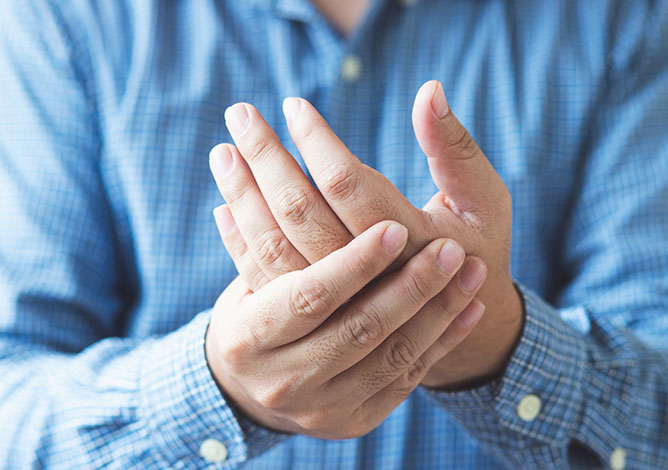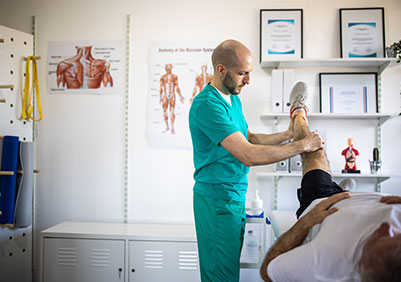Osteoarthritis
The Most Common Form of Arthritis
Osteoarthritis is the most common type of arthritis, affecting more than 30 million Americans. It is a degenerative joint disease that occurs when the cartilage – the protective lining that covers the ends of bones in a joint – breaks down and wears away. This can cause pain, stiffness, and reduced movement in the joint.
The condition usually affects the knees, hips, groin, back, or thigh areas. As it worsens, activities that involve shifting your weight – such as standing up from a chair, walking, or running – can become difficult.

Types of Osteoarthritis
Hip Osteoarthritis
Hip osteoarthritis is a common type of arthritis that affects the hip joint and affects the hip joint and causes pain and stiffness. The deterioration of cartilage in the hip joint can cause pain and tightness.
Knee Osteoarthritis
Knee osteoarthritis occurs when the cartilage – the protective lining that covers the ends of bones in a joint – breaks down and wears away. This can cause pain, stiffness, and reduced movement in the knee.
Shoulder Osteoarthritis
Shoulder osteoarthritis can also lead to pain and stiffness in the shoulder. Symptoms may include pain in the upper arm, neck, or back areas, reduced movement in the shoulder joint, and a decrease in the range of motion.
Other forms of Osteoarthritis
There are several other types of osteoarthritis that can affect different joints in the body, such as the ankle, wrist, and elbow. Each type can cause different symptoms and require a different treatment plan.
Types of Treatment for Joint Pain
Common Solutions to Joint Arthritis

Joint pain can be from osteoarthritis or an injury. Often times, physical therapy can help you strengthen your joints without further injury.

Therapeutic injections can alleviate pain caused by osteoarthritis or injury and are often coupled with physical therapy for a robust treatment plan.

Sometimes knee replacement is the final option to a better and more mobile life. Often this helps our patients get back to what is most important in life.
